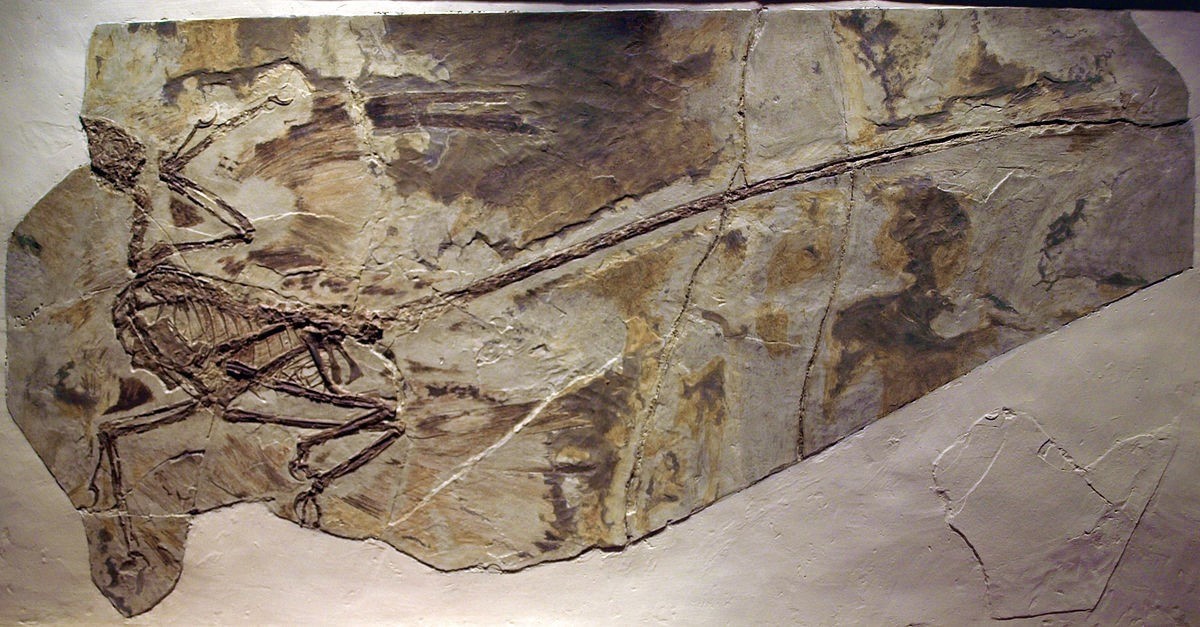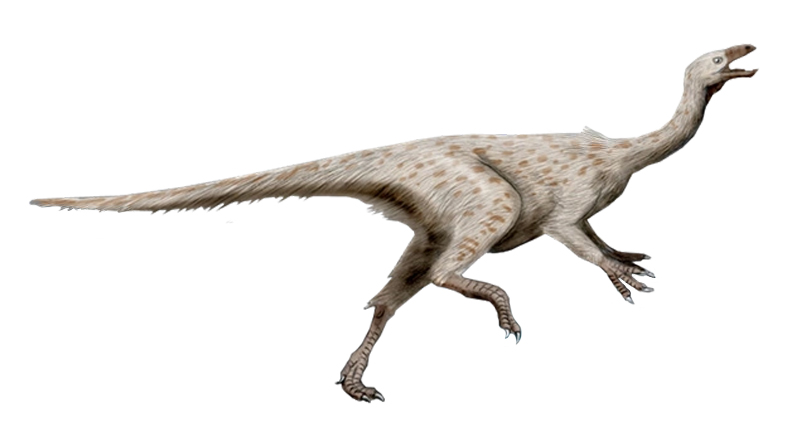|
Maniraptora
Maniraptora is a clade of coelurosaurian dinosaurs which includes the birds and the non-avian dinosaurs that were more closely related to them than to '' Ornithomimus velox''. It contains the major subgroups Avialae, Deinonychosauria, Oviraptorosauria and Therizinosauria. ''Ornitholestes'' and the Alvarezsauroidea are also often included. Together with the next closest sister group, the Ornithomimosauria, Maniraptora comprises the more inclusive clade Maniraptoriformes. Maniraptorans first appear in the fossil record during the Jurassic Period (see '' Eshanosaurus''), and survive today as living birds. Description Maniraptorans are characterized by long arms and three-fingered hands (though reduced or fused in some lineages), as well as a "half-moon shaped" (semi-lunate) bone in the wrist ( carpus). In 2004, Tom Holtz and Halszka Osmólska pointed out six other maniraptoran characters relating to specific details of the skeleton. Unlike most other saurischian dinosaurs, ... [...More Info...] [...Related Items...] OR: [Wikipedia] [Google] [Baidu] |
Dinosaur
Dinosaurs are a diverse group of reptiles of the clade Dinosauria. They first appeared during the Triassic period, between 243 and 233.23 million years ago (mya), although the exact origin and timing of the evolution of dinosaurs is the subject of active research. They became the dominant terrestrial vertebrates after the Triassic–Jurassic extinction event 201.3 mya; their dominance continued throughout the Jurassic and Cretaceous periods. The fossil record shows that birds are feathered dinosaurs, having evolved from earlier theropods during the Late Jurassic epoch, and are the only dinosaur lineage known to have survived the Cretaceous–Paleogene extinction event approximately 66 mya. Dinosaurs can therefore be divided into avian dinosaurs—birds—and the extinct non-avian dinosaurs, which are all dinosaurs other than birds. Dinosaurs are varied from taxonomic, morphological and ecological standpoints. Birds, at over 10,700 living species ... [...More Info...] [...Related Items...] OR: [Wikipedia] [Google] [Baidu] |
Oviraptorosauria
Oviraptorosaurs ("egg thief lizards") are a group of feathered maniraptoran dinosaurs from the Cretaceous Period of what are now Asia and North America. They are distinct for their characteristically short, beaked, parrot-like skulls, with or without bony crests atop the head. They ranged in size from ''Caudipteryx'', which was the size of a turkey, to the 8-meter-long, 1.4-ton ''Gigantoraptor''. The group (along with all maniraptoran dinosaurs) is close to the ancestry of birds. Some researchers such as Maryanska ''et al'' (2002) and Osmólska ''et al.'' (2004) have proposed that they may represent primitive flightless birds.Osmólska, Halszka, Currie, Philip J., Brasbold, Rinchen (2004) "The Dinosauria" Weishampel, Dodson, Osmólska. "Chapter 8 Oviraptorosauria" University of California Press. The most complete oviraptorosaur specimens have been found in Asia. The North American oviraptorosaur record is sparse.Varricchio, D. J. 2001. Late Cretaceous oviraptorosaur (Theropod ... [...More Info...] [...Related Items...] OR: [Wikipedia] [Google] [Baidu] |
Archaeopteryx
''Archaeopteryx'' (; ), sometimes referred to by its German name, "" ( ''Primeval Bird''), is a genus of bird-like dinosaurs. The name derives from the ancient Greek (''archaīos''), meaning "ancient", and (''ptéryx''), meaning "feather" or "wing". Between the late 19th century and the early 21st century, ''Archaeopteryx'' was generally accepted by palaeontologists and popular reference books as the oldest known bird (member of the group Avialae). Older potential avialans have since been identified, including '' Anchiornis'', '' Xiaotingia'', and '' Aurornis''. ''Archaeopteryx'' lived in the Late Jurassic around 150 million years ago, in what is now southern Germany, during a time when Europe was an archipelago of islands in a shallow warm tropical sea, much closer to the equator than it is now. Similar in size to a Eurasian magpie, with the largest individuals possibly attaining the size of a raven, the largest species of ''Archaeopteryx'' could grow to about in ... [...More Info...] [...Related Items...] OR: [Wikipedia] [Google] [Baidu] |
Elopteryx
''Elopteryx'' is a genus of, perhaps troodontid, maniraptoran theropod dinosaur based on fragmentary fossils found in late Cretaceous Period rocks of Romania. The single species, ''Elopteryx nopcsai'', is known only from very incomplete material, and therefore is considered a ''nomen dubium'' ("dubious name") by most paleontologists. History of discovery and naming Initial finds In the late nineteenth or early twentieth century, the famous Hungarian paleontologist Franz Nopcsa von Felső-Szilvás found near Sînpetru, in what is now the Romanian region of Transylvania, some bone fragments of a small theropod. These were acquired by the British Museum of Natural History. In 1913, curator Charles William Andrews named these as the type species ''Elopteryx nopcsai''. The genus name ''Elopteryx'' is from Ancient Greek ''helos'' (ἕλος), "marsh" + ''pteryx'' (πτέρυξ), "wing". The specific name honors Nopcsa. Initially, ''Elopteryx'' was described from its holotype, a pro ... [...More Info...] [...Related Items...] OR: [Wikipedia] [Google] [Baidu] |
Yaverlandia
''Yaverlandia'' (meaning "of Yaverland Point/Yaverland Battery") is a genus of maniraptoran dinosaur. Known from a partial fossil skull (MIWG 1530) found in Lower Cretaceous strata of the Wessex Formation (Upper Silty Bed; Vectis Formation) on the Isle of Wight. it was described as the earliest known member of the pachycephalosaurid family, but research by Darren Naish shows it to have actually been a theropod, seemingly a maniraptoran. The type species is ''Y. bitholus''.Galton, P.M. (1971) "A primitive dome-headed dinosaur (Ornithischia: Pachycephalosauridae) from the Lower Cretaceous of England and the function of the dome of pachycephalosaurids". ''Journal of Paleontology'', Vol. 45, No. 1, Pages 40–47. Discovery and naming MIWG 1530, the holotype skull, was discovered in 1930, in England and were commented upon by Watson (1930). It was referred to as an iguanodontid of the genus ''Vectisaurus'' in 1936. When Steel (1969) followed Hulke (1879) in listing ''Vectisaurus'' as ... [...More Info...] [...Related Items...] OR: [Wikipedia] [Google] [Baidu] |
Pedopenna
''Pedopenna'' (meaning "foot feather") is a genus of small, feathered, maniraptoran dinosaur from the Daohugou Beds in China. It is possibly older than ''Archaeopteryx'', though the age of the Daohugou Beds where it was found is debated. A majority of studies suggest that beds probably date from between the late Middle Jurassic (168 million years ago) and early Late Jurassic Period (164-152 million years ago). The name ''Pedopenna'' refers to the long pennaceous feathers on the metatarsus; ''daohugouensis'' refers to the locality of Daohugou, where the holotype was found. ''Pedopenna daohugouensis'' probably measured 1 meter (3 ft) or less in length, but since this species is only known from the hind legs, the actual length is difficult to estimate. ''Pedopenna'' was originally classified as a paravian, the group of maniraptoran dinosaurs that includes both deinonychosaurs and avialans (the lineage including modern birds), but some scientists have classified it as a ... [...More Info...] [...Related Items...] OR: [Wikipedia] [Google] [Baidu] |
Therizinosauria
Therizinosaurs (once called segnosaurs) were large herbivorous theropod dinosaurs whose fossils have been found across the Early to Late Cretaceous deposits in Asia and North America. Various features of the forelimbs, skull and pelvis unite these finds as both theropods and maniraptorans, close relatives to birds. The name of the representative genus, '' Therizinosaurus'', is derived from the Greek (, 'to reap' or 'scythe')Translated paper and (, 'lizard'). The older representative, ''Segnosaurus'', is derived from the ('slow') and the Greek . History of research [...More Info...] [...Related Items...] OR: [Wikipedia] [Google] [Baidu] |
Maniraptoriformes
Maniraptoriformes is a clade of dinosaurs with pennaceous feathers and wings that contains ornithomimosaurs and maniraptorans. This group was named by Thomas Holtz, who defined it as "the most recent common ancestor of ''Ornithomimus'' and birds, and all descendants of that common ancestor." Fossil evidence Many fossils have been discovered in recent years, particularly in China. Many of the feathered dinosaurs belong to this clade. In particular, a fossil of the Alvarezsauridae ''Shuvuuia'' has a version of keratin consistent with that of avian feathers. Many nearly complete fossil maniraptoriforms are known from the late Jurassic. ''Archaeopteryx'' is known from Bavaria at 155–150 Ma. ''Ornitholestes'', the troodontid ''Hesperornithoides'', ''Coelurus fragilis'' and '' Tanycolagreus topwilsoni'' are all known from the Morrison Formation in Wyoming at about 150 Ma. The Daohugou biota, including '' Anchiornis'' and '' Epidexipteryx'', is the earliest record of manira ... [...More Info...] [...Related Items...] OR: [Wikipedia] [Google] [Baidu] |
Coelurosauria
Coelurosauria (; from Greek, meaning "hollow tailed lizards") is the clade containing all theropod dinosaurs more closely related to birds than to carnosaurs. Coelurosauria is a subgroup of theropod dinosaurs that includes compsognathids, tyrannosaurs, ornithomimosaurs, and maniraptorans; Maniraptora includes birds, the only known dinosaur group alive today. Most feathered dinosaurs discovered so far have been coelurosaurs. Philip J. Currie had considered it likely and probable that all coelurosaurs were feathered. However, several skin impressions found for some members of this group show pebbly, scaly skin, indicating that feathers did not completely replace scales in all taxa. In the past, Coelurosauria was used to refer to all small theropods, but this classification has since been abolished. Anatomy Bodyplan The studying of anatomical traits in coelurosaurs indicates that the last common ancestor had evolved the ability to eat and digest plant matter, adapting to a ... [...More Info...] [...Related Items...] OR: [Wikipedia] [Google] [Baidu] |
Fukuivenator
''Fukuivenator'' ("hunter of Fukui Prefecture") is an extinct genus of therizinosaurian theropod dinosaur from the Early Cretaceous of Japan. Discovery and naming The type species ''Fukuivenator paradoxus'' was in 2016 named and described by Yoichi Azuma, Xu Xing, Masateru Shibata, Soichiro Kawabe, Kazunori Miyata and Takuya Imai. The generic name combines a reference to the Fukui prefecture with Latin ''venator'', "hunter". The specific name refers to the paradoxical combination of traits shown by the species. The rocks in which the skeleton of ''Fukuivenator'', holotype FPDM-V8461, was found in August 2007 belong to the Kitadani Formation, which is probably of Barremian or Aptian age. Radiometric dating of nearby rock units has given this formation an estimated age of somewhere between 127 and 115 million years old. The holotype consists of a partial skeleton with skull. The skeleton of ''F. paradoxus'' is currently the most complete non-avian dinosaur fossil found in ... [...More Info...] [...Related Items...] OR: [Wikipedia] [Google] [Baidu] |
Eshanosaurus
''Eshanosaurus'' is a genus of a dinosaur from the early Jurassic Period. It is known only from a fossil partial lower jawbone, found in China. It may be a therizinosaurian, and if so the earliest known coelurosaur. Discovery and naming The type species, ''Eshanosaurus deguchiianus'', was described by Xu Xing, Zhao, and James M. Clark in 2001. The generic name is derived from Eshan. The specific name honours Hikaru Deguchi who convinced Xu that he should study dinosaurs. The type specimen, consisting of three fragments of a fossilized left lower jaw and teeth, was uncovered in the Dull Purplish Beds of the Lower Lufeng Formation in Yunnan, dating to about 196 million years ago (Hettangian stage). The specimen is in the collection of the Institute of Vertebrate Paleontology and Paleoanthropology in Beijing, where it is catalogued under accession number IVPP V11579. Classification The authors who initially described the fossil, classified ''Eshanosaurus'' as a member of the ... [...More Info...] [...Related Items...] OR: [Wikipedia] [Google] [Baidu] |
Ornithomimosauria
Ornithomimosauria ("bird-mimic lizards") are theropod dinosaurs which bore a superficial resemblance to the modern-day ostrich. They were fast, omnivorous or herbivorous dinosaurs from the Cretaceous Period of Laurasia (now Asia, Europe and North America), as well as Africa and possibly Australia. The group first appeared in the Early Cretaceous and persisted until the Late Cretaceous. Primitive members of the group include '' Nqwebasaurus'', ''Pelecanimimus'', '' Shenzhousaurus'', '' Hexing'' and ''Deinocheirus'', the arms of which reached 2.4 m (8 feet) in length. More advanced species, members of the family Ornithomimidae, include ''Gallimimus'', '' Struthiomimus'', and '' Ornithomimus''. Some paleontologists, like Paul Sereno, consider the enigmatic alvarezsaurids to be close relatives of the ornithomimosaurs and place them together in the superfamily Ornithomimoidea (see classification below). Description The skulls of ornithomimosaurs were small, with large ey ... [...More Info...] [...Related Items...] OR: [Wikipedia] [Google] [Baidu] |





.jpg)



